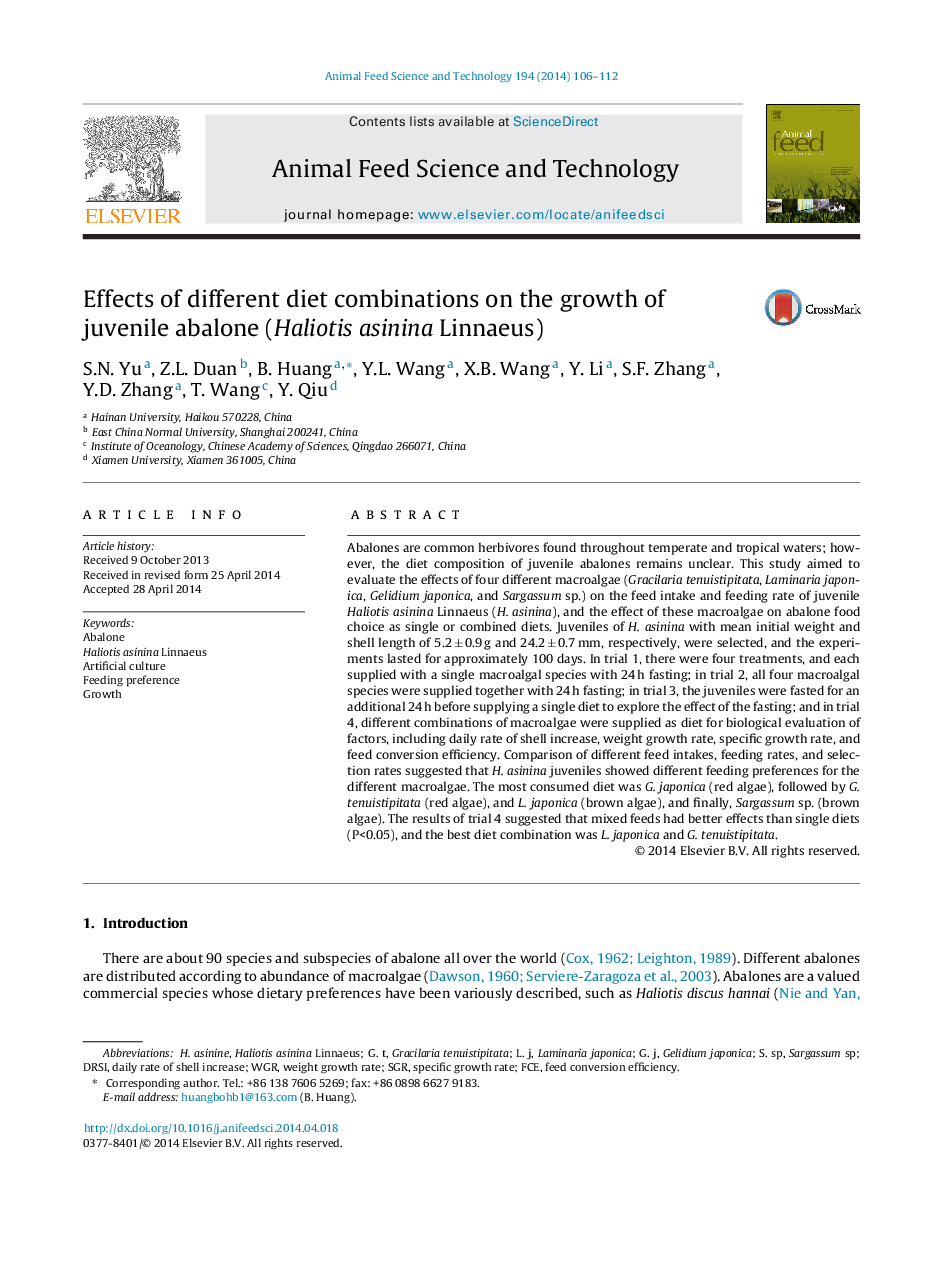| کد مقاله | کد نشریه | سال انتشار | مقاله انگلیسی | نسخه تمام متن |
|---|---|---|---|---|
| 2419571 | 1552391 | 2014 | 7 صفحه PDF | دانلود رایگان |

• We discussed the feeding preference of juvenile abalone (Haliotis asininna Linnaeus).
• Four trials aimed to evaluate the effects on feed intake and feeding rate.
• The most consumed diet was Gelidium japonica (red algae).
• Mixed feeds had better effects than single diet.
Abalones are common herbivores found throughout temperate and tropical waters; however, the diet composition of juvenile abalones remains unclear. This study aimed to evaluate the effects of four different macroalgae (Gracilaria tenuistipitata, Laminaria japonica, Gelidium japonica, and Sargassum sp.) on the feed intake and feeding rate of juvenile Haliotis asinina Linnaeus (H. asinina), and the effect of these macroalgae on abalone food choice as single or combined diets. Juveniles of H. asinina with mean initial weight and shell length of 5.2 ± 0.9 g and 24.2 ± 0.7 mm, respectively, were selected, and the experiments lasted for approximately 100 days. In trial 1, there were four treatments, and each supplied with a single macroalgal species with 24 h fasting; in trial 2, all four macroalgal species were supplied together with 24 h fasting; in trial 3, the juveniles were fasted for an additional 24 h before supplying a single diet to explore the effect of the fasting; and in trial 4, different combinations of macroalgae were supplied as diet for biological evaluation of factors, including daily rate of shell increase, weight growth rate, specific growth rate, and feed conversion efficiency. Comparison of different feed intakes, feeding rates, and selection rates suggested that H. asinina juveniles showed different feeding preferences for the different macroalgae. The most consumed diet was G. japonica (red algae), followed by G. tenuistipitata (red algae), and L. japonica (brown algae), and finally, Sargassum sp. (brown algae). The results of trial 4 suggested that mixed feeds had better effects than single diets (P<0.05), and the best diet combination was L. japonica and G. tenuistipitata.
Journal: Animal Feed Science and Technology - Volume 194, August 2014, Pages 106–112